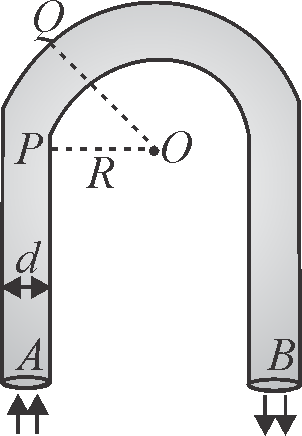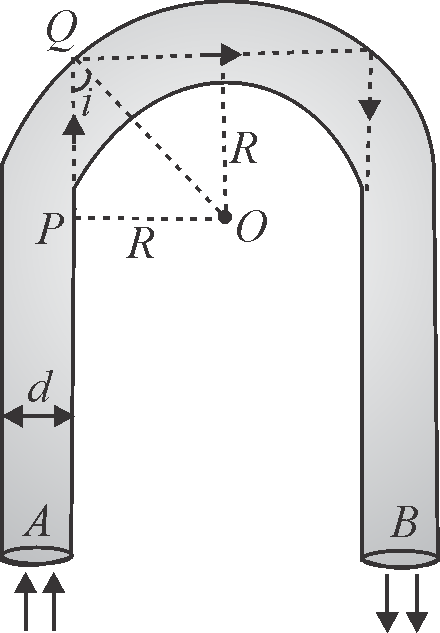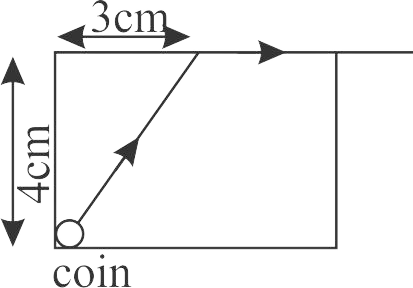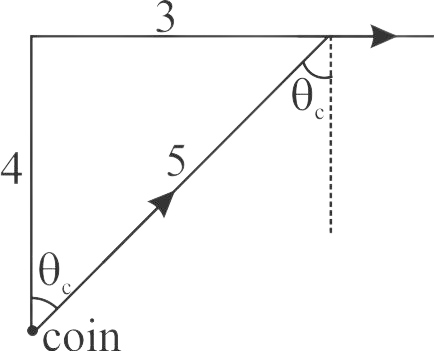364932
A rod made of glass \({(\mu=1.5)}\) and of square cross-section is bent into the shape shown in figure. A parallel beam of light falls perpendicularly on the plane flat surface \({d}\). Referring to the diagram, \({d}\) is the width of a side and \({R}\) the radius of inner semi-circle. Find the maximum value of ratio \({(d / R)}\) so that all light entering the glass through surface \({A}\) emerge from the glass through \({B}\).
364932
A rod made of glass \({(\mu=1.5)}\) and of square cross-section is bent into the shape shown in figure. A parallel beam of light falls perpendicularly on the plane flat surface \({d}\). Referring to the diagram, \({d}\) is the width of a side and \({R}\) the radius of inner semi-circle. Find the maximum value of ratio \({(d / R)}\) so that all light entering the glass through surface \({A}\) emerge from the glass through \({B}\).
364932
A rod made of glass \({(\mu=1.5)}\) and of square cross-section is bent into the shape shown in figure. A parallel beam of light falls perpendicularly on the plane flat surface \({d}\). Referring to the diagram, \({d}\) is the width of a side and \({R}\) the radius of inner semi-circle. Find the maximum value of ratio \({(d / R)}\) so that all light entering the glass through surface \({A}\) emerge from the glass through \({B}\).
364932
A rod made of glass \({(\mu=1.5)}\) and of square cross-section is bent into the shape shown in figure. A parallel beam of light falls perpendicularly on the plane flat surface \({d}\). Referring to the diagram, \({d}\) is the width of a side and \({R}\) the radius of inner semi-circle. Find the maximum value of ratio \({(d / R)}\) so that all light entering the glass through surface \({A}\) emerge from the glass through \({B}\).



